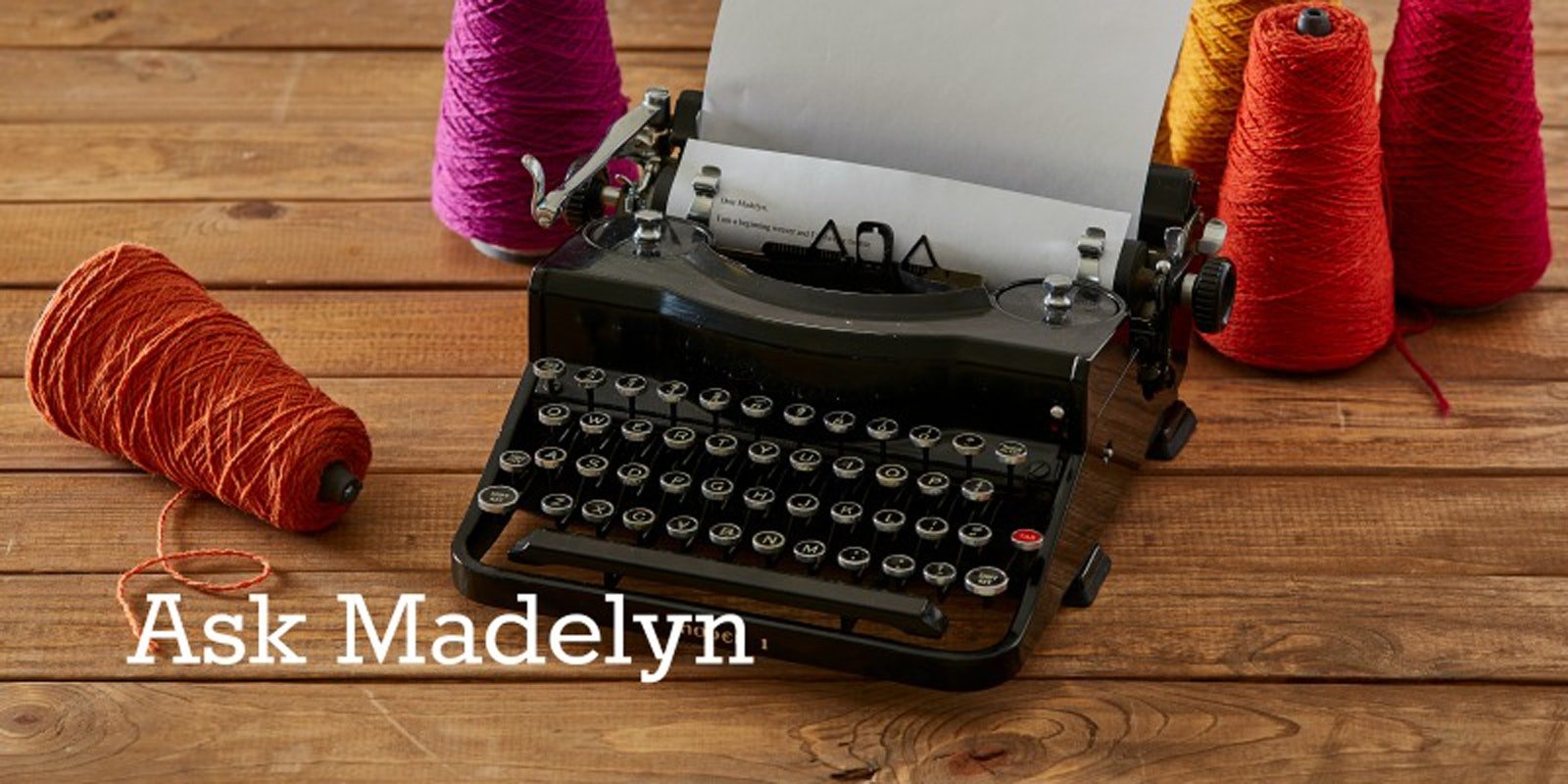Hi Madelyn!
I am confused about the number of warp threads in the runner in the article “Pearl Cotton and Overshot: A Perfect Union,” by Mary Berent (November/December 2010, pages 38–40). The project calls for 577 warp threads. Is this correct?
Carolyn

Hi Carolyn!
Drafts for weaving can be very difficult to read, especially when a draft for a great many threads is being written in as small a space as possible. This one has both brackets that indicate repeats and letters (a, b, and c) to indicate the starting and ending points of sections that are repeated.
For this draft, the accompanying instructions say: Start at the top right (a) and thread to c. Then start at a again and thread to b. (Note that a doubled floating selvedge is used at the beginning and end of the threading.)
Remember, that all threading drafts in Handwoven are read from right to left. If there are multiple rows of threading, they are all read from right to left.
In this draft, threading from a to c means start at a (after the floating selvedges) with the 2x section (32 ends), then thread to the end of that row (58 ends). For the next row, thread from the right to the 2x brackets (57 ends), then the 2x section (32 ends), ending at b. For the third row, thread the 6x section (32 x 6 = 192 ends), ending at c (23 ends): 2 + 32 + 58 + 57 + 32 + 192 + 23 = 396.
To “Start at a again and thread to a to b,” repeat all of the above (except the initial floating selvedges) ending at b (omitting the third row) and end with 2 floating selvedges: 32 + 58 + 57 + 32 + 2 = 181.
396 + 181 = 577.
I do want to say that it took me some time and a few errors to get this all right (and I bet, since I was the editor when this article was written, that it took me some time back then, too). It’s only counting, but as a student once responded when I told her that, “Yes, but it’s advanced counting.”
Madelyn
PS. Note that for this treadling draft, the tabby picks are omitted. The numbers refer to how many times to use a respective treadle for the pattern weft, always alternating with tabby. Imagine how many pages it would take to write out the complete treadling! We do need these shortcuts even though they can sometimes make you want to stick to plain weave or take a walk.

